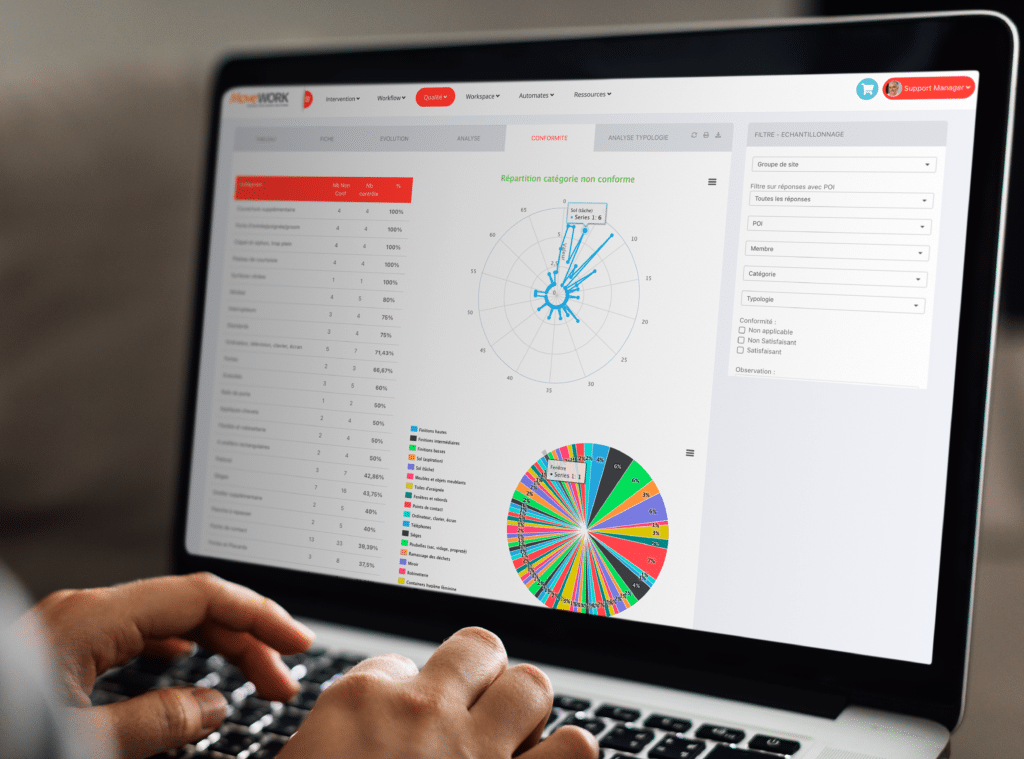Quality management is a crucial topic in today’s consumer society. The increasing availability of diverse and innovative services has made consumers highly demanding. To remain competitive in their market, companies must manage their service quality with an iron fist.
But, in an age where information travels faster than lightning, how can everything be controlled? Digitalizing quality management is becoming a necessity for organizations. MoveWORK provides you with the guide!
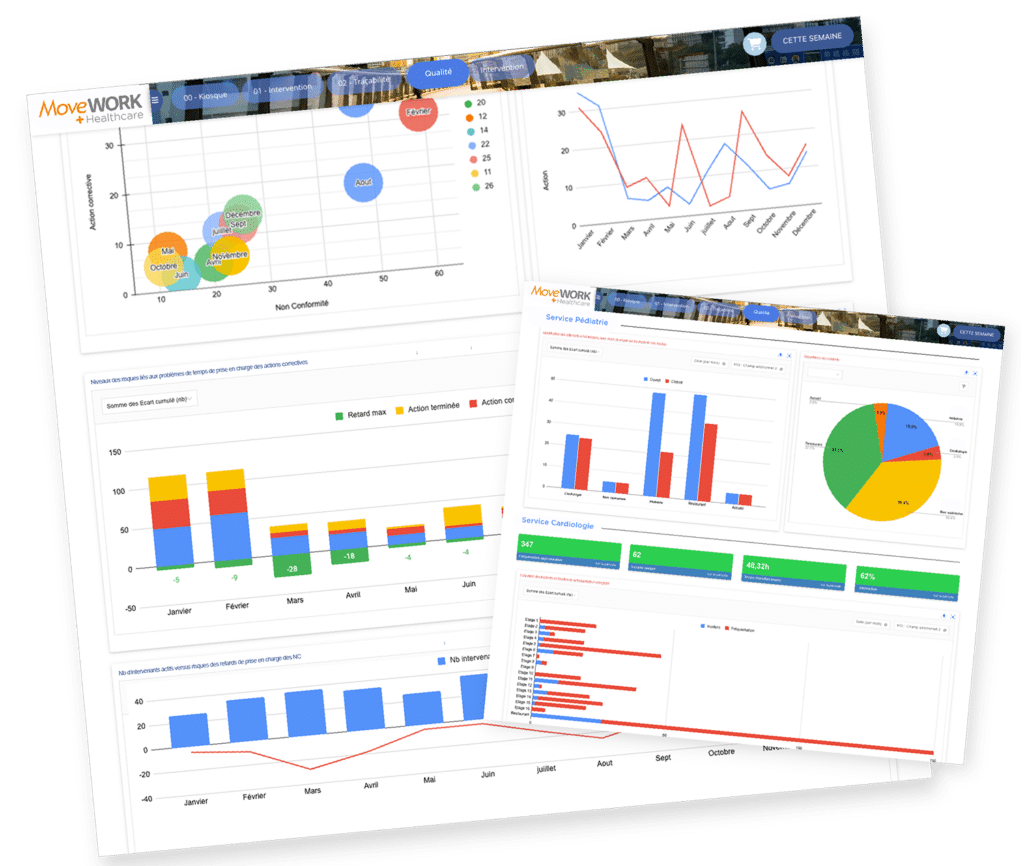
What is quality management ?
Quality management is a management method that uses various techniques to measure, monitor, and maintain predefined quality standards. Its primary goal is to ensure customer or occupant satisfaction by providing high-quality products and services.
Additionally, quality management encompasses cross-functional principles that impact all departments, teams, or functions within the company.
Why implement a quality management system?
Quality management enables organizations to precisely meet new user expectations. Indeed, users now demand immediacy and flawless service. Are you organizing a professional event for your clients? The receptionist must provide a flawless service. Is a company hiring a cleaning service? The cleanliness of the premises must be impeccable!
Occupants, clients, or users expect reliable services that meet their needs. By meticulously controlling processes, effective quality management ensures these requirements are met.
Moreover, in a connected world, markets are becoming increasingly competitive. Quality is a key factor for standing out from competitors. An on-site non-compliance issue? Send an agent immediately to resolve the problem! Without quality management and regular checks, detecting and resolving anomalies is impossible. Maintaining high service quality, regardless of circumstances, is crucial for retaining your clients.
Finally, following health, food safety, and industrial scandals, compliance standards have tightened significantly. Regardless of the industry, companies must adhere to strict regulations. Quality management is essential to ensure that every component of a service meets these criteria. Failure to comply with these regulations can lead to severe penalties. Quality management contributes to long-term business success and helps companies overcome contemporary challenges.
What are the benefits of quality management?
Quality management is a process that ensures the effectiveness and efficiency of both internal and external operations. This oversight is governed by quality standards, monitored using specific methodologies. Managing the quality of services offers numerous benefits:
- Improvement in customer satisfaction
- Increased customer loyalty
- Reduction in costs related to non-compliance, business stoppages, and dissatisfaction
- Decrease in customer complaints
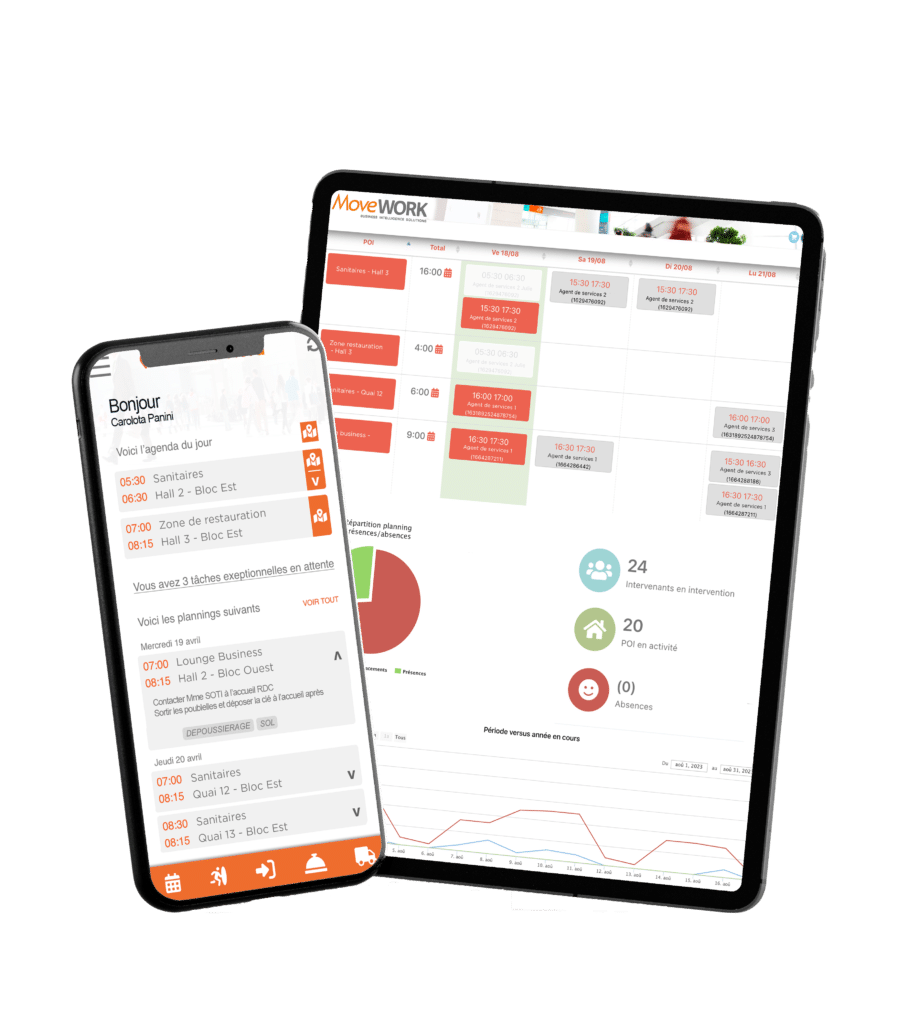
Mitigation of health and safety risks
Traceability and data history
Continuous process improvement
Compliance with regulatory standards
Enhanced brand image
In summary, quality management plays a crucial role in the profitability and sustainability of businesses. This process fosters the creation of an organizational culture focused on collective continuous improvement.
Digitalization: An Essential Element for Enhancing Quality Management
Gradually, paper-based quality monitoring is disappearing. Indeed, the complexity of rating systems, the multitude of criteria to evaluate, and the need for speed are gradually pushing manual management towards obsolescence. In a world where technology is omnipresent, digitalizing the quality management of your organization has become imperative.
Automate to Maximize Productivity
Digitalizing quality processes significantly improves a company’s performance. First, by dematerializing lengthy and time-consuming manual tasks, processing times are greatly reduced. With the automation of quality data collection, all information is reported instantly. Gone are the days of forgetting or making mistakes—everything is automatic. Digitalization provides precise tracking of activities and the origin of issues.
Optimized resolution of abnormal situations
Next, automating quality management allows problems to be resolved more quickly. Anomalies are identified within seconds, and corrections are triggered instantly. In addition to reducing resolution time, intervention processes can be improved. Companies become more responsive, adapt to changes, and make decisions more easily.
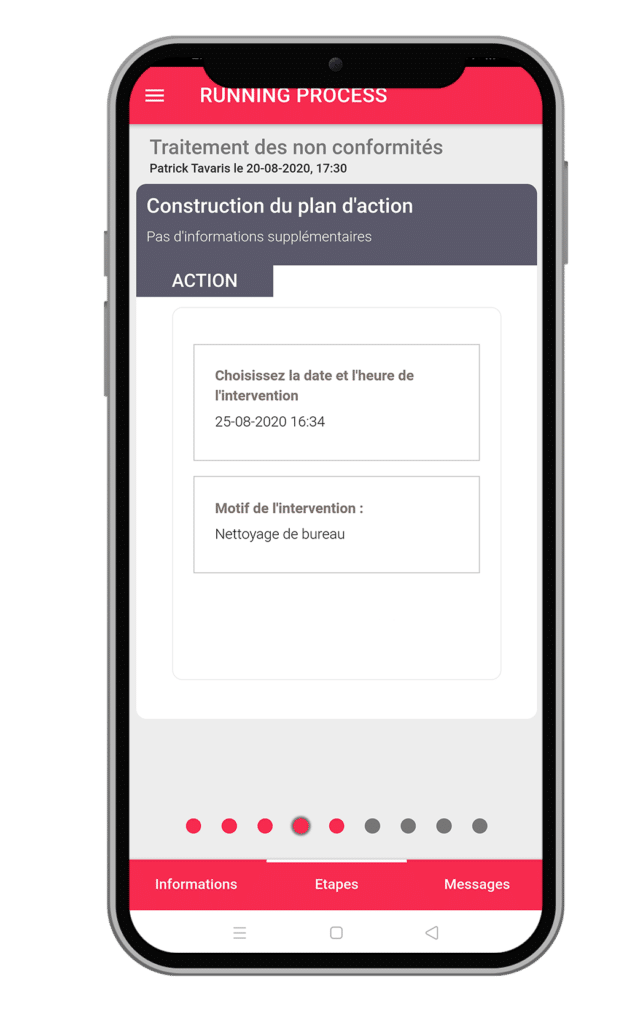
Tools for Digitalizing Quality Management
To digitize quality controls and their monitoring, there are several types of digital systems available. These systems vary in cost depending on the number of features they offer. Their price also fluctuates based on the accuracy of the controls and the management of processes.
Electronic document management tools
This type of system allows for secure storage of quality-related documentation. These platforms, applications, or software encrypt collected data for enhanced protection. Access codes are assigned to quality managers or based on user roles. Document management tools facilitate activity tracking with audit logs.
Despite their intuitive search architecture, these processing systems do not enable corrective actions. Their role is limited to the logical categorization of documents, maintaining history and version referencing, and providing alerts for significant changes.
Quality management systems (QMS)
Quality management systems (QMS) are software structures designed to standardize and optimize quality processes. These tools enable the digitalization of compliance and certification controls through digital tracking of KPIs. Quality management systems create structured workflows and automated processes to ensure alignment with current standards.
In addition to tracking stages, these tools offer interactive dashboards for monitoring specific indicators. The use of complex algorithms allows for the anticipation of quality trends and the proactive identification of areas for improvement. However, while these systems notify administrators of non-compliance, they cannot trigger corrective actions. Therefore, the tracking of corrections and resolutions is handled on other platforms.
The MoveWORK Flow platform: the all-in-one, cross-functional quality management tool
What if all the modules mentioned earlier, and much more, were combined into a single tool? Thanks to its years of digital experience, MoveWORK has developed a modular platform that allows you to manage your quality processes from A to Z.
Quality management holds no secrets for us! Digitalized quality controls, real-time tracking of resolution interventions, customer satisfaction rates linked to journeys… Everything you need is available in our MoveWORK Flow platform. The cross-functionality of our system allows for the automatic coupling and real-time analysis of all your operational flows.
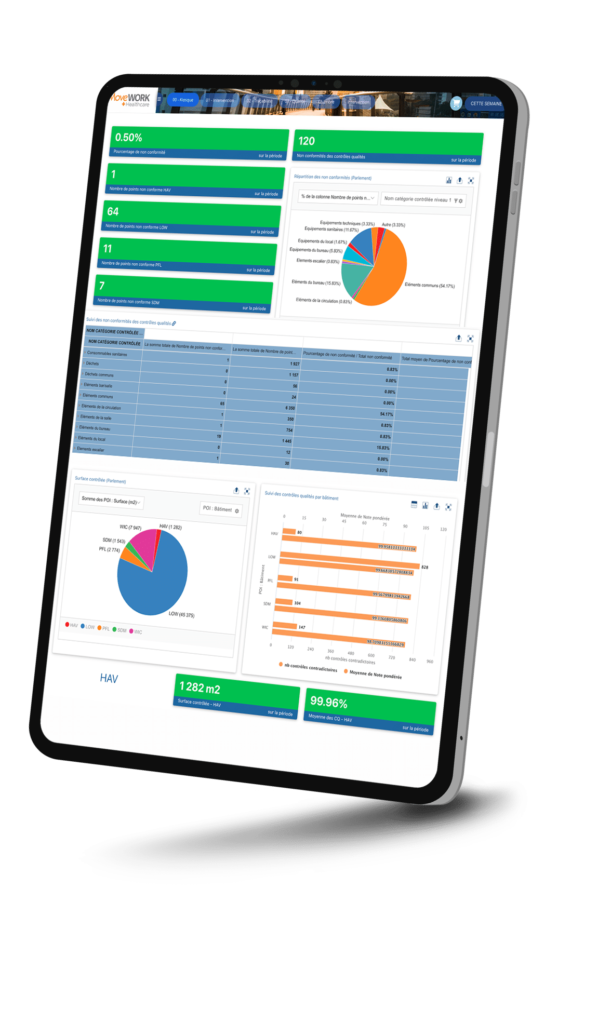
The intelligent management system of MoveWORK Flow identifies non-compliances, determines the most appropriate corrective action scenario for resolution, and implements it directly on-site. The platform locates the nearest available and qualified agent, alerts them of the issue, and sends the personalized correction protocol within seconds. The quality manager can simultaneously monitor the progress of the resolution protocol remotely, from anywhere.
Additionally, the quality manager has a real-time view of all quality indicators for their operations. KPIs, ongoing interventions, and corrections across one, two, or even twenty sites can be tracked on an interactive map. With a glance, the administrator gets an overview of the areas they are responsible for.
Finally, the MoveWORK platform allows for the analysis of quality data in real-time reports. Presented in the form of dashboards, the data is correlated to identify risks, trends, or performance. The possibilities for analysis are endless! MoveWORK Flow is interoperable with your business tools to create a comprehensive analysis ecosystem.
